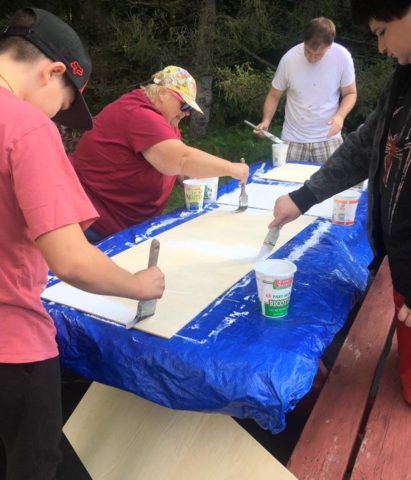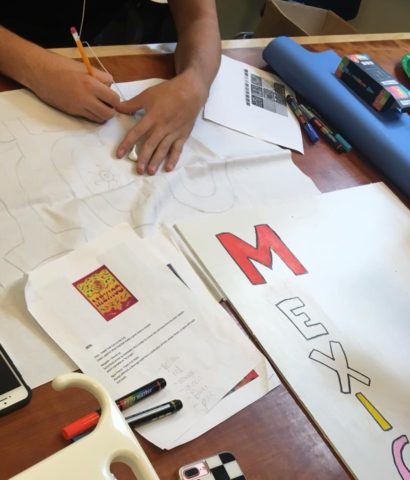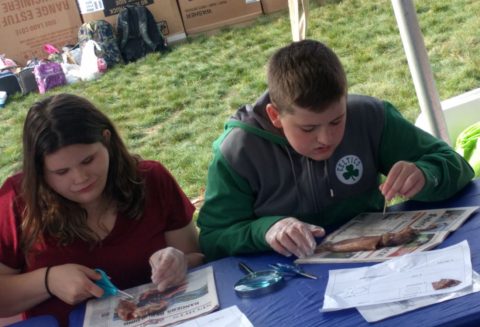 Thank you to the students and faculty that showed up on Sunday to support Making Strides! We completed our five mile walk and are steps closer to finding a cure. A special thank you to all that donated to this important cause. We reached our goal of raising $1000, together we can make a difference!
Thank you to the students and faculty that showed up on Sunday to support Making Strides! We completed our five mile walk and are steps closer to finding a cure. A special thank you to all that donated to this important cause. We reached our goal of raising $1000, together we can make a difference!
Taking Part: Multicultural Festival
We at Parker Academy are always looking for new ways to reach out to families to include them in our adventures and successes. This is our second installment of ‘Taking Part’ in our 2018-2019 year and we hope you enjoy it as much as we have!
 Multicultural Festival: Our mission is to create a Welcoming Community for all by fostering a culture of appreciation for diversity, providing engaging learning opportunities, and empowering new Americans with opportunities to successfully integrate and be part of our community.
Multicultural Festival: Our mission is to create a Welcoming Community for all by fostering a culture of appreciation for diversity, providing engaging learning opportunities, and empowering new Americans with opportunities to successfully integrate and be part of our community.Taking Part: Day of Caring
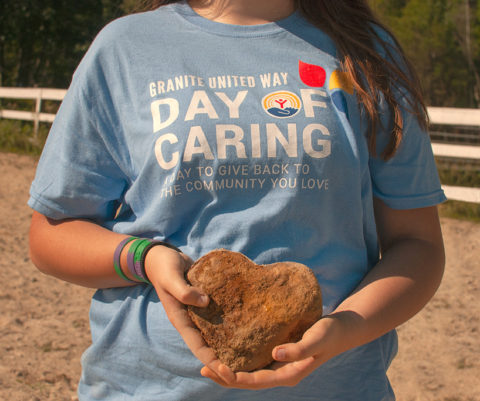 We at Parker Academy are always looking for new ways to reach out to families to include them in our adventures and successes. This is our first installment of ‘Taking Part’ in our 2018-2019 year and we hope you enjoy it as much as we have!
We at Parker Academy are always looking for new ways to reach out to families to include them in our adventures and successes. This is our first installment of ‘Taking Part’ in our 2018-2019 year and we hope you enjoy it as much as we have!
Parker Academy took part in Granite United Way‘s ‘Day of Caring’ this morning. They tackled five different locations to make a difference in their community! From painting a building, removing brush or picking up litter, these kids put their all into the tasks at hand. #dayofcaring2018
US History and the Civil War – By Joe Webster
 In US History, the class has been learning about slavery and the Civil War. With a class size of four, the students have a lot of opportunity to ask questions and share their ideas.
In US History, the class has been learning about slavery and the Civil War. With a class size of four, the students have a lot of opportunity to ask questions and share their ideas.
We started with reading aloud portions of “Narrative of the Life of Frederick Douglass, An American Slave” in an effort to get them used to using a “ primary source” This helps them to get an eyewitness view of the cruelties and spirit crushing impact of slavery.
We followed this with lessons on the various compromises of the antebellum period in which Congress tried unsuccessfully to balance the interests of “Free Soil” states with slaveholding states. The class engaged in a notetaking and discussion exercise with excerpts from Ken Burns’ “The Civil War” documentary.
The unit ended with a reading of journal entries by John Wilkes Booth and others about the Lincoln assassination.
The unit was a great chance to see what the students knew about the Civil War and to add to their knowledge base. It helped students to develop an understanding of the issues Americans were struggling with at that time.
When Perfectionism Takes Control – From the February Newsletter
 The teacher reads a story to the class and then directs the students to select a character from the story and write a description of that character. The students get busy with the project and one by one, hand in the finished work. However, some students may struggle with an assignment. What was enjoyable for the other students is a daunting task for this student because perfectionism has caused him or her to be overly self-critical.
The teacher reads a story to the class and then directs the students to select a character from the story and write a description of that character. The students get busy with the project and one by one, hand in the finished work. However, some students may struggle with an assignment. What was enjoyable for the other students is a daunting task for this student because perfectionism has caused him or her to be overly self-critical.
To the outside world, perfectionists seem like super achievers, but inwardly they may be struggling to meet unusually high standards they set for themselves.
Perfectionism itself is not a bad trait, but carried to extremes, it can become destructive. Never quite satisfied with their accomplishments, they may be experiencing low self-esteem and anxiety. Perfectionists are often overly critical of themselves and others.
What can you do if you think your child may be plagued by excessive perfectionism? Avoid being critical; attempt to bolster his or her self-esteem by explaining that imperfection is acceptable. It’s okay to be average or work to the best of one’s abilities. Give praise for completed tasks. For the perfectionist, just being able to finish something is an accomplishment.
You may want to let your child’s teacher know about this trait. Educators have experience dealing with different personality types, and they should be able to work with your child.
Help Your Student See The World of Physics Around Them
Physics may be one of the most challenging sciences, but it’s also with us all the time in our everyday lives. Help your child stop and notice.
Thinking about science in real-life terms can help your child master the subject. Sound difficult? Relax. It’s only a matter of translating the language of physics into the language of your child.
- Rest. This is the state of the book, gum wrapper or item of clothing your child leaves on the counter or the floor! An object is at rest when it is simply lying there and not moving at all.
- Inertia. This is your child after dropping the item. She knows she should pick up the item and put it away, but doesn’t feel like it. Inertia is a fancy term for resisting a change from one type of motion to another.
- Force. This is you. Force makes change happen. When you come along and tell your child she won’t be going out this weekend unless everything is picked up, you exert a force on your child. This force overcomes her inertia. She puts herself in motion and picks up what she left lying around.
- Mass. This is one way to tell how hard your child will have to work at cleaning up. Smaller objects (the gum wrapper) that are lighter and easier to move have less mass. Bigger objects (a stack of books) that are heavier and more difficult to move have more mass.
Emotional Regulation at Parker Academy
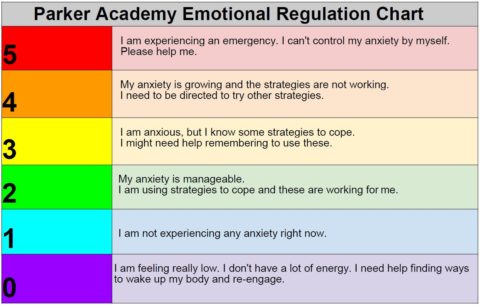 At Parker Academy, we help students learn how to regulate their behaviors. We utilize an “Emotional Regulation” chart to help students identify their emotional level and help them to develop strategies to manage their emotions. The lessons and learning activities that we use are designed to help students recognize when they are in the different zones as well as how to use strategies to change the zone they are in.
At Parker Academy, we help students learn how to regulate their behaviors. We utilize an “Emotional Regulation” chart to help students identify their emotional level and help them to develop strategies to manage their emotions. The lessons and learning activities that we use are designed to help students recognize when they are in the different zones as well as how to use strategies to change the zone they are in.
In addition to addressing self-regulation, students gain an increased awareness of emotional terms, develop skills in reading other people’s facial expressions, and gain a better perspective about how others see and react to their behavior. Students gain better insight into events that may trigger their behavior, and develop calming, alerting, and problem solving strategies.
Parents can help the efforts of the school and the student. Your child’s advisor can provide you with a copy of the “Emotional Regulation” chart or you can use the one that has been attached.
Parents can help by using language similar to what is used at the school and talk about the concepts of the emotional regulation zones as they apply to you in a variety of environments.
You can comment aloud so that your child understands that everyone experiences the different zones and use strategies to control (or regulate) ourselves.
For example, “This is really frustrating me and making me go into the Yellow Zone.”
“I need to use a tool to calm down.” “I will take some deep breaths and practice mindfulness.” Help your child gain awareness of his or her emotional regulation zones and feelings by pointing out your own.
Parents can talk about what zone is “expected” in the situation or how a zone may have been “unexpected.” They can share with the student how his or her behavior is affecting the zone you are in and how you feel. Parents can help the student become comfortable using language to communicate his or her feelings and needs, encouraging the student to share his or her zone with you.
Ask the student if s/he wants reminders to use these tools and how you should present these reminders. Ask the student to frequently share his or her Zones Folder with you and talk about what he or she has learned.
Make sure you frequently reinforce the student for being in the expected zone rather than only pointing out when his or her zone is unexpected. It is important to note that everyone experiences all of the zones. All of the zones are expected at one time or another. The Zones of Regulation are intended to be neutral and not communicate judgment.
With your support at home, your child can benefit from learning how to identify their regulation level and then develop strategies to manage their behavior.
Bullying Affects Mental Health
 Prior to the opening of school, the staff participated in a workshop on bullying. They were trained in what is and what isn’t bullying, and reviewed the signs that suggest bullying is taking place.
Prior to the opening of school, the staff participated in a workshop on bullying. They were trained in what is and what isn’t bullying, and reviewed the signs that suggest bullying is taking place.
Although we haven’t seen much bullying here, we want to remain vigilant. We know that approximately 30% of students in public schools, almost one-third of kids in grades six through 12, experience bullying. Bullying ranges from name-calling and teasing to threats, lies, pushing, and hitting.
We know that bullying can leave a lifelong legacy of depression, low self-esteem, and behavioral problems. We recommend the following:
–Plan a response. Offer your child different approaches, such as ignoring the bully. Or try a response that may catch the bully off guard, such as, “Why would you say something like that to me?”
–Report the bully. If your child pleads with you not to report bullying to the teacher, consider talking to the teacher anyway. Ask that your child not be identified and that the bully be better supervised.
If your child is doing the bullying, talk with him or her about how that makes other kids feel. Get your child involved in projects that require helping and cooperating with others.
Dealing with Anxiety in Children and Adolescence – New Insights!
The number of cases of anxiety among children and adolescents is on the rise. This informative, must-read article goes into great detail on the possible causes and strategies for coping with anxiety.



